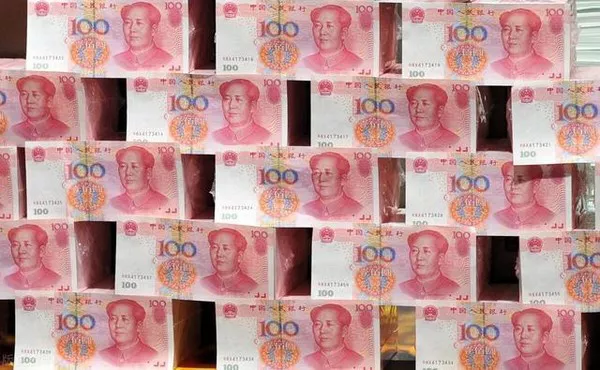In the dynamic world of international finance, exchange rates play a pivotal role in shaping economic landscapes. Investors, businesses, and governments closely monitor these rates to make informed decisions. In recent times, the spotlight has turned towards the Chinese yuan and the Turkish lira. This article delves into the intricacies of the current RMB exchange rate and explores the question on everyone’s mind: how much is yuan to lira?
1. Understanding the Basics of Exchange Rates
Before we delve into the specifics of yuan to lira, it’s crucial to comprehend the fundamentals of exchange rates. Exchange rates determine the value of one currency in terms of another. Factors such as economic indicators, interest rates, and geopolitical events influence these rates. The yuan to lira exchange rate is no exception, and its movements can be a barometer of economic health.
2. The Current Yuan to Lira Exchange Rate
As of the latest data available, the current exchange rate between the Chinese yuan (CNY) and the Turkish lira (TRY) stands at 1 CNY to 4.17 TRY. This means that one Chinese yuan is equivalent to 4.17 Turkish lira in the foreign exchange market. Understanding this numerical relationship is crucial for businesses engaged in cross-border trade and investors looking to capitalize on currency movements.
3. Factors Influencing the Yuan to Lira Exchange Rate
A myriad of factors contributes to the fluctuations in the yuan to lira exchange rate. Economic indicators such as inflation, interest rates, and GDP growth can impact the value of each currency. Additionally, geopolitical tensions, trade relations between China and Turkey, and global economic trends can also play a pivotal role. Analyzing these factors provides insights into the dynamics of the current exchange rate.
4. Economic Indicators and Their Impact
Economic indicators are crucial elements influencing the yuan to lira exchange rate. China’s robust economic performance, marked by steady GDP growth and a controlled inflation rate, can contribute to the strengthening of the yuan. On the other hand, Turkey’s economic indicators, such as inflationary pressures and high-interest rates, may affect the lira’s value. Investors keen on understanding the yuan to lira exchange rate must closely monitor these indicators.
5. Interest Rates and Exchange Rate Dynamics
Interest rates wield significant influence over exchange rates. Central banks, including the People’s Bank of China and the Central Bank of the Republic of Turkey, use interest rates as a tool to control inflation and stabilize their currencies. An increase in interest rates in China relative to Turkey may lead to a stronger yuan to lira exchange rate, making Chinese goods more expensive for Turkish consumers.
6. Trade Relations Between China and Turkey
Trade relations between China and Turkey are pivotal in understanding the yuan to lira exchange rate. A flourishing trade partnership may result in increased demand for each other’s currencies, impacting their respective values. The bilateral trade balance, tariffs, and trade policies can contribute to fluctuations in the exchange rate, presenting opportunities and challenges for businesses engaged in cross-border activities.
7. Geopolitical Considerations
Geopolitical factors can introduce an element of uncertainty into the yuan to lira exchange rate. Tensions or collaborations between China and Turkey on the global stage may sway investor confidence and impact currency values. Traders and investors must remain vigilant about geopolitical developments to anticipate potential shifts in the exchange rate landscape.
See Also: Current RMB Exchange Rate: Yuan to Rupees
8. Global Economic Trends and Currency Markets
The interconnected nature of the global economy means that events in one region can have far-reaching consequences on currency markets. Yuan to lira exchange rate movements may be influenced by global economic trends, such as the strength of the US dollar, commodity prices, and overall market sentiment. A holistic view of the economic landscape is essential for accurate exchange rate predictions.
9. Historical Perspectives on Yuan to Lira Exchange Rate
Examining historical trends provides valuable insights into the yuan to lira exchange rate. Historical data can reveal patterns, cyclical movements, and potential trends that may repeat in the future. Analyzing the historical performance of the yuan and lira can aid investors and businesses in making informed decisions and mitigating risks associated with currency fluctuations.
10. Future Outlook and Considerations
In conclusion, the current yuan to lira exchange rate reflects a complex interplay of economic, political, and global factors. As businesses and investors navigate this landscape, staying informed about economic indicators, interest rates, trade relations, and geopolitical developments is paramount. The future outlook for the yuan to lira exchange rate remains uncertain, making it imperative for stakeholders to remain adaptable and proactive in response to evolving market conditions.
Related Topics:
Current RMB Exchange Rate: Yuan to RWF
Current RMB Exchange Rate: Yuan to Tugrik
Current RMB Exchange Rate: Yuan to USD Today


